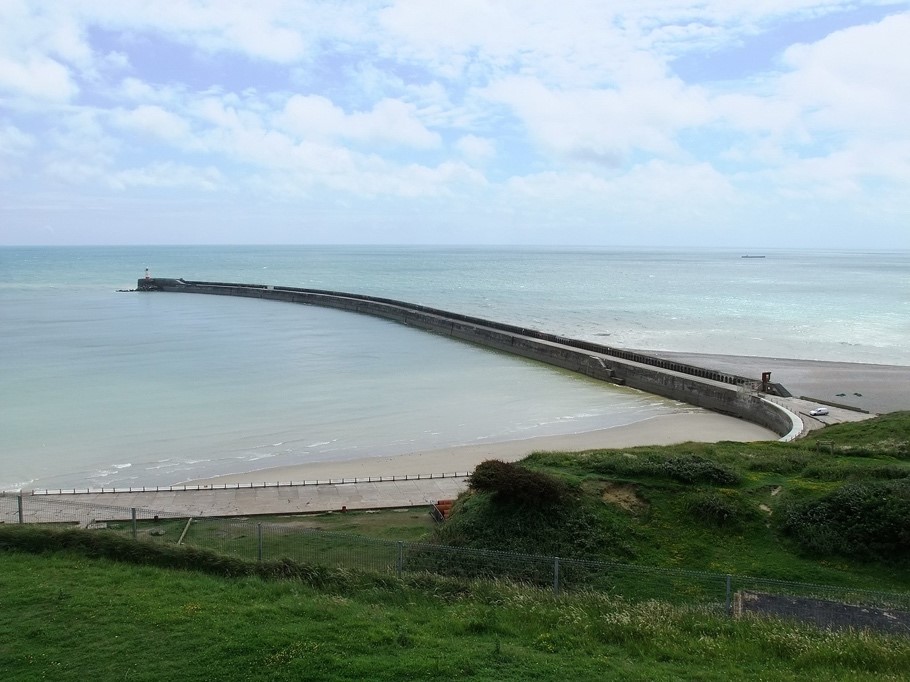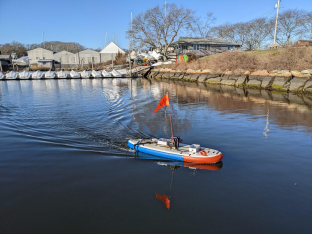[ad_1]
Each summer, the University of Rhode Island Graduate School of Oceanography (GSO) hosts undergraduate students from all over the country to participate in oceanographic research. These Summer Undergraduate Research Fellows (SURFOs) have not only been working with GSO scientists, but they also have spent part of their time learning how to communicate this science to the public. Read on to find out what they have been up to, and why everyone should be as excited as they are about their work.
____________________
Nathan Gonzalez will be entering his junior year at Gordon College in Wenham, MA in Fall 2022. He is majoring in Applied Physics and Mathematics with a concentration in Engineering Physics. This summer, he is working in the Robotics Laboratory for Complex Underwater Environments (RCUE) at the University of Rhode Island under the advising and mentorship of Dr. Stephen Licht. Read on to learn about his interesting research!
Changing Climates
Climate change is proving to be one of the century’s most critical issues. Wildfires, droughts, flooding, and sea-level rise all associated with climate change have had detrimental impacts on communities and wildlife habitats across the globe. These dangerous weather events are also becoming increasingly severe. One of the major issues associated with sea-level rise is coastal erosion. The beaches many of us remember from our childhoods are either disappearing or have since been lost to the ocean. In the past, weather events such as small tropical storms might have had little to no major effects on coastal communities, but now storms are washing away entire sections of beaches and putting towns underwater.
In addition to the dangers of erosion, such as natural disasters like cliff slides and flooding, coastal areas have to consider the economic repercussions that erosion might bring. Many communities heavily rely on the income generated as a result of their proximity to the ocean. Eroding beaches might deter tourists and cause businesses to go under.
Erosion dangers have put lives and property in harm’s way, forcing localities to consider how they can prevent such disasters from occurring in the future, as well as try to predict where they may occur next. Some coastal areas have already employed methods of slowing or stopping erosion. These methods include seawalls, breakwaters, and bulkheads.

The problem with these solutions, however, is that they are only a short-term fix and they require an extremely large initial investment. If better data about coastal erosion existed, it would allow localities to be more strategic with how they invested in coastal infrastructure. By understanding the shape of the coast and how it is changing, it might also be possible to use alternative methods of lessening the impact of erosion such as strategic planting of vegetation and beach nourishment. To better equip such efforts, scientists and local agencies have begun strategic efforts designed to better track the changing shape of the coast.
Innovative Technologies
Many of the current technologies that are available for coastal assessments are expensive or inaccessible. For this reason, there is not a lot of information regarding coastal erosion for the vast majority of coastlines around the world. This summer, I am working in the Robotics Laboratory for Complex Underwater Environments (RCUE) where we hope to solve both the issues of affordability and accessibility in coastal erosion assessments.

RCUE has developed an ultra-lightweight unmanned surface vehicle (USV) for near-shore surveys, which can help us collect data about the sections of beach covered by water. During these surveys, the USV navigates a predetermined path along the coast. As it moves, the USV measures the depth, longitude, and latitude at every location on its journey. As the USV gathers data about the beach floor below the water line, we also use an unmanned aerial vehicle (UAV) to gather data about the dry shore above the water line. The UAV uses an attached high-definition camera to take photographs of the coast, while also collecting information on elevation and coordinates. Once we have all of the data, it is important for us to visualize it in a meaningful way.
My Work!
Extrapolating useful information from the gathered data is the main focus of my work this summer. I am creating digital elevation models (DEM) using the information collected from the USV and UAV. With these DEMs I am able to take transects, or cuts, across both vehicles’ data sets for a particular location, giving me corresponding depths, longitudes, and latitudes. Each location has been sampled multiple times. Once enough DEMs have been made, a catalog of these transects will be created at a variety of locations, showing how each location’s coastline is changing over time. These cataloged transects will then be used to inform the necessary infrastructure for preventing or slowing erosion. We are hopeful this data will help the wildlife habitats, coastal communities, and industries that are affected by shrinking coastlines.

Cover Image: An image from the National Park Service depicting some of the erosion that has occurred on Cape Hatteras National Seashore in North Carolina.
I am a PhD candidate at Wake Forest University, and I received a B.S. in Biology from Cornell University. My research focuses on the terrestrial locomotion of fishes. I am particularly interested in how different fishes move differently on land, and how one fish may move differently in different environments. While I tend to study small amphibious fishes, I’ve had a lifelong fascination with all ocean animals, and sharks in particular. When not doing science, I enjoy running, attempting to bake and cook, and reading.
[ad_2]
Source link

